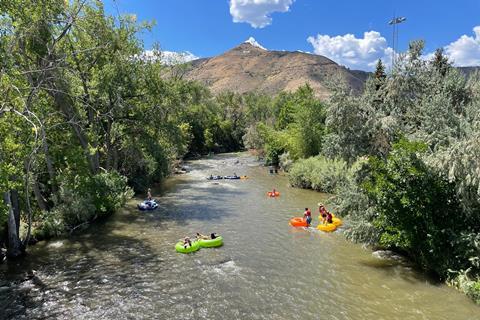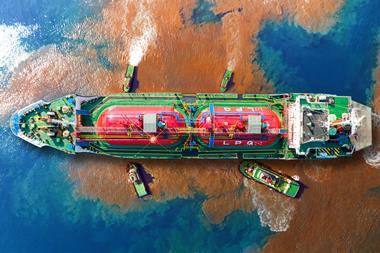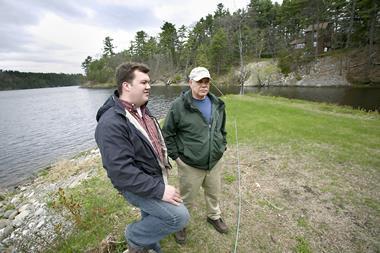Human activities like tubing and swimming significantly impact river chemistry, according to preliminary results from researchers at Johns Hopkins University and Colorado School of Mines that were presented at the autumn meeting of the American Chemical Society (ACS) held in San Francisco, California and virtually.
Last year, the Hopkins-led team examined samples from Clear Creek in Colorado over the busy Labor Day weekend in September – when there can be up to 500 people every hour swimming and tubing in the stream – and again on a quieter weekday afterward. To provide a comparison, they analysed samples taken upstream from an undisturbed spot along the waterway.
Specifically, they were looking for inorganic contaminants, including metals and nanoparticles, as well as organic contaminants like pharmaceuticals. The team also investigated the stream’s microbiome.
The analysis turned up illegal drugs like cocaine, the local anaesthetic lidocaine, seizure medications, and plasticisers like phthalates. Organic sunscreens and UV filters were also detected, along with the antihistamine fexofenadine, and polyethylene glycol, which is considered a laxative and is also used as a lubricating coating for various surfaces.
All these compounds presumably washed off the skin of people in the creek, or were released in their sweat or urine, among other possible sources, the researchers said.
Noor Hamdan, an environmental engineering PhD student at Hopkins who presented the work at the ACS briefing, explained that the team used liquid chromatography–high resolution mass spectrometry to separate and identify the compounds. ‘What we can do with this instrument is blow these compounds into tinier fragments to elucidate their structure and chemical properties, and then we can find out what really is in these samples,’ she explained. ‘We found that, specifically in the microbial analysis, that the biome composition changes as a function of human recreational activity in the creek.’
Heavy recreation days resulted in elevated major and trace metals, including lead and zinc, Hamdan added, suggesting that humans contribute significantly to resuspending metals and sediment.
Organic sunscreen ingredients like avobenzone and oxybenzone, which have been shown to harm the environment and negative impact aquatic organisms, were also detected.

The researchers searched for the compounds they had found in the US Environmental Protection Agency’s Computational Toxicology Chemicals Dashboard (CompTox), which provides public access to chemistry, toxicity, and exposure data.
‘What we found is that for a large majority of these compounds, we don’t have data on their chronic aquatic toxicity,’ Hamdan stated. ‘We don’t have data on their persistence and their mobility in the environment,’ she continued. However, the researchers note that that most of the compounds have low bioaccumulative potential, which means that they won’t build up in the bodies of organisms over time.
The team plans to sample Clear Creek again later this year, over Labor Day weekend, and conduct more statistical analysis to confirm that humans really are significantly impacting the stream. Ultimately, they want to collect more samples to track trends over time.
‘Most of these compounds that are introduced into the stream are the result of washing off of the body, like sunscreen and personal care products like fragrances,’ said Hamdan. ‘If you urinate in the river or you sweat in the river, all of those xenobiotic metabolites can also get into the water.’ She also recommends wearing mineral sunscreens, which have ingredients like zinc and titanium and aluminum, and do not contain organic contaminants that can be toxic to aquatic organisms.
However, Michael Focazio, who retired earlier this year from the US Geological Survey where he coordinated the agency’s environmental health programme tells Chemistry World that further work is needed to fully understand the study’s implications. ‘It makes sense that people will be direct sources of these contaminants via swimming and tubing as well as indirect sources as bed sediment is disturbed,’ he says. ‘But as far as I can tell … there is no perspective provided on other risk sources such as wastewater treatment plant effluents, flooding, etc., which would be needed in order to understand the significance of swimming and tubing.’

















No comments yet